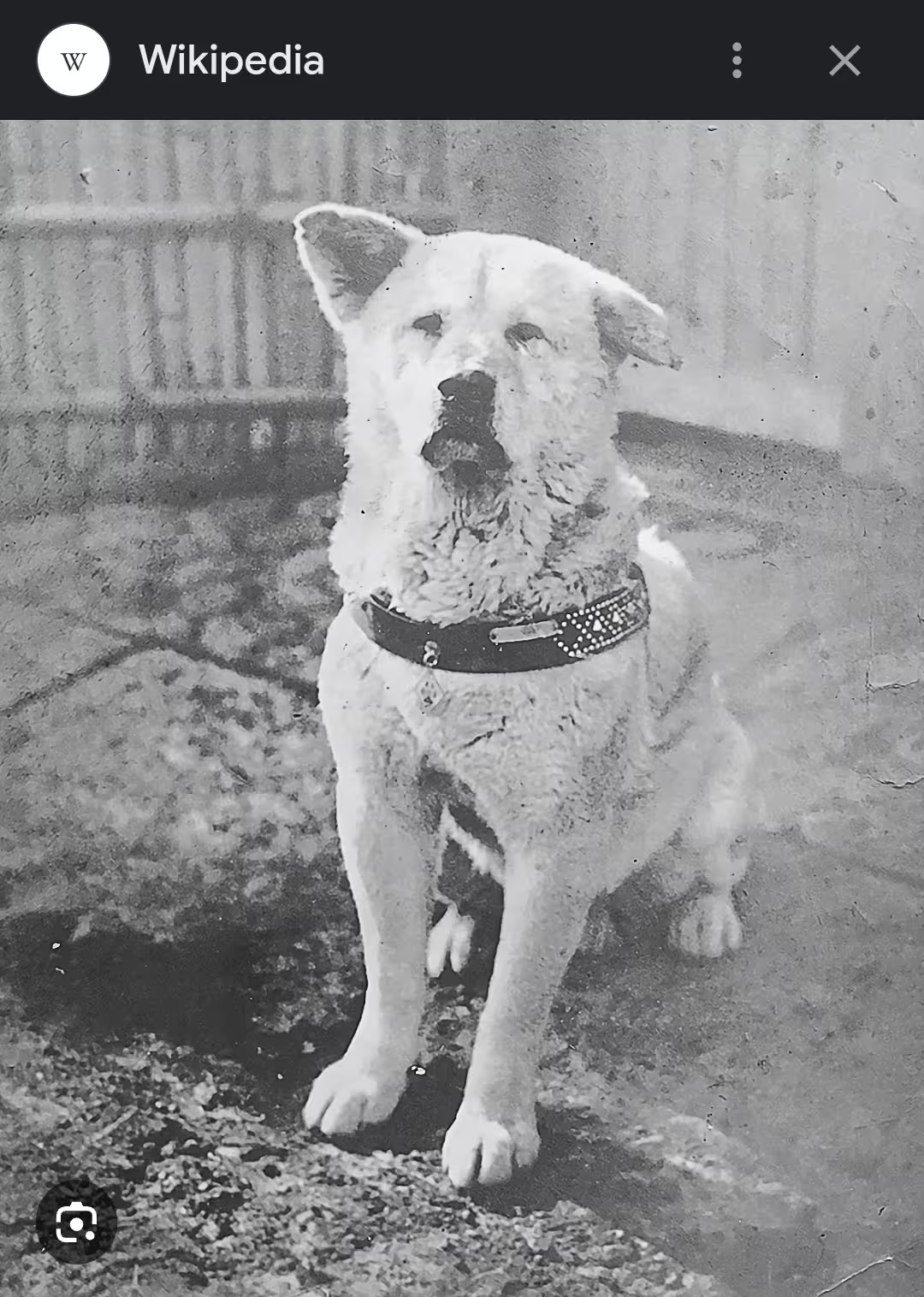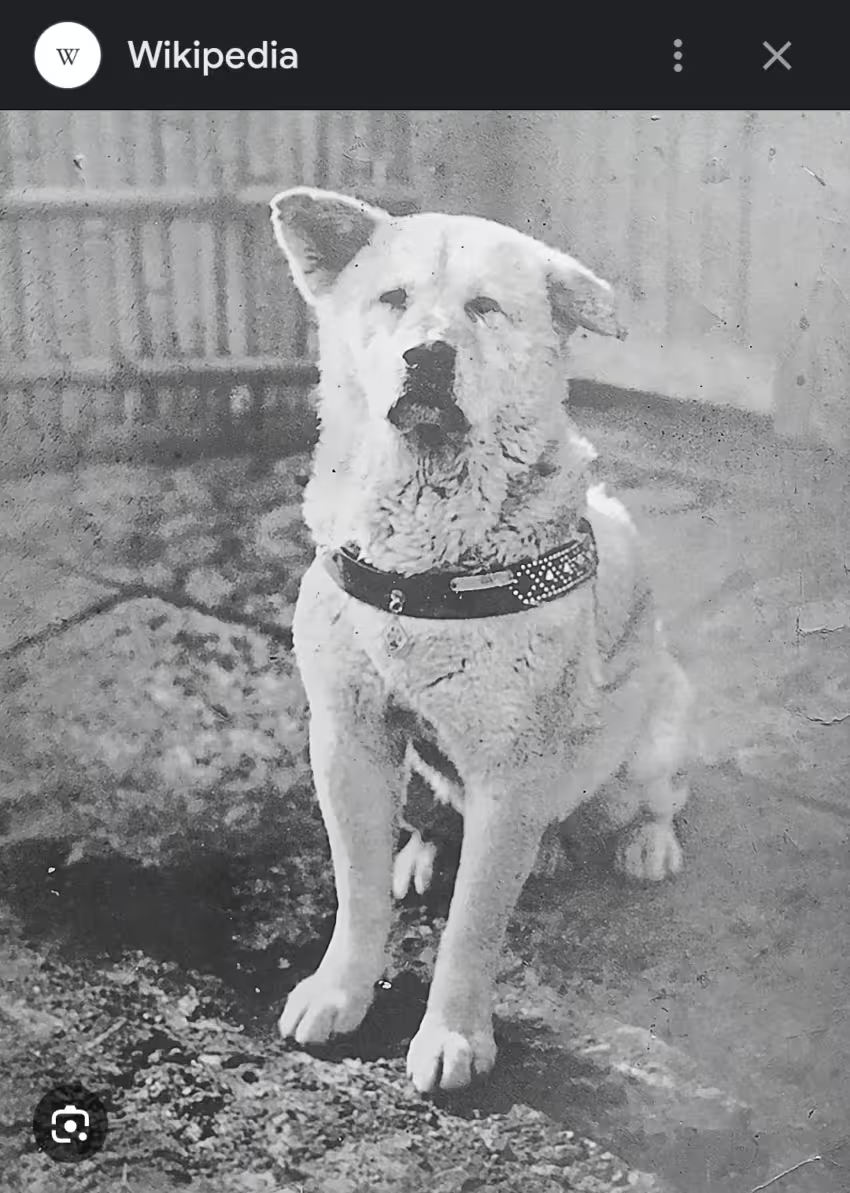
13: Hachikō
Dog Remembered for His Loyalty to His Owner, Even After the Owner Passed Away
Born: 10 November 1923, Odate City, Akita Prefecture, Japan
Died: 8 March 1935, Shibuya-ku, Tokyo, Japan
Also Known As: Hachi
Hachikō is arguably the most-famous dog in Japanese history. His story has been immortalized in several movies, books, and he has two bronze statues dedicated to him—one at Shibuya Train Station in Tokyo and the other at Woonsocket Depot Square in Rhode Island, USA. The Hollywood movie about him starred Richard Gere and was called “Hachiko—A Dog’s Tale.” The reason why the second statue is in Rhode Island is because that is where the Richard Gere film was made.
Hachikō was born on a small farm in Akita Prefecture to a set of purebred Akita breeding parents. He was purchased for ¥30 soon after he was born by a professor named Hidesaburō Ueno, who brought Hachikō with him back to Tokyo, where he lived and worked.
The train journey home took around twenty hours, and at first the professor was worried that his new puppy had died during the trip. Hachikō wasn’t dead, but he was very weak. Over the next six months, his new owners slowly nursed him back to health until he was big and strong.
Soon after bringing him home, Hachikō began to follow the professor to the train station to see him off to work every morning. Hachikō also learned to tell the time, and would meet the professor at the station every evening to walk him home.
Sadly, a little over a year later, Hachikō found himself waiting at the train station for his owner at the end of the work day. However, his owner never showed. Unbeknownst to Hachikō, the professor had suffered a cerebral hemorrhage while at work and passed away at only fifty-three years old.
Hachikō began to live with a local farming family instead. Despite having a new family, Hachikō never forgot his first owner, and every afternoon for almost a decade he would go to the train station at precisely the right time, waiting for the professor to come back.
Not all of the other staff and visitors in the train station were happy to see the habitually returning dog. His official biographer recounts that Hachikō was beaten and abused by several people, who thought he was a nuisance and taking up space in the busy station.
That all changed in 1932, when a major Japanese newspaper published Hachikō’s story. Overnight, the loyal dog became an instant celebrity. People would travel from all over Japan to visit Hachikō and give him treats.
Hachikō continued to visit the station every day for nine years, nine months, and fifteen days after the death of Professor Ueno. He only stopped when Hachikō himself passed away at the age of eleven.
After his death, the people of Japan had his fur stuffed and put on display in the National Museum of Nature and Science in Tokyo, where visitors from all over the world can continue to see him and thank him for his devotion to his owner.
As for the rest of Hachikō…well, according to Nerd Nomads (article linked below), his liver, heart, and lungs are on display alongside his autopsy report in a small museum on the University of Tokyo’s grounds, alongside a memorial to Hachikō and Professor Ueno.
The rest of Hachikō’s remains were cremated and buried alongside Professor Ueno.
Badges Earned:
Find a Grave Marked
Sources:
https://nerdnomads.com/hachiko_the_dog
https://www.denverartmuseum.org/en/edu/book-recommendation/hachiko-true-story-loyal-dog

